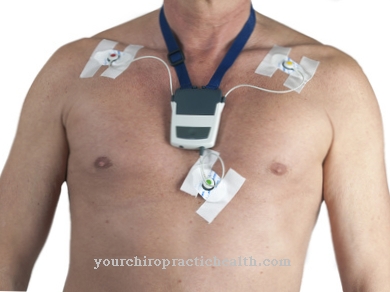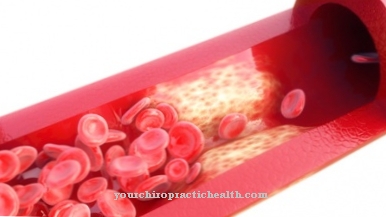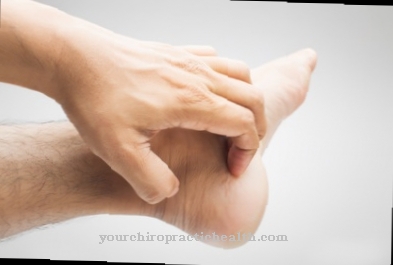A Arthroplasty is a surgical procedure on the joint. The surgical intervention is intended to restore the function of the joint or to ensure healthy joint function.
What is arthroplasty?

A joint is a movable connection between two or more bones. In a real joint, there is a gap between the two ends of the bone. This is called the joint space. The surfaces of the joint are covered by articular cartilage.
Around the joint lies the protective joint capsule, which consists of an outer, tight connective tissue layer and an inner epithelial-like layer. Joints can be damaged by various diseases. Osteoarthritis is responsible for most joint damage. The term osteoarthritis is used when signs of wear and tear on the joint go beyond the normal range. Start-up pain and stress-dependent pain are typical of osteoarthritis.
Joint deformities and stiffness in the joint are also possible symptoms of osteoarthritis. Arthroplasty is used in particular for stiff joints, severely painful joints and joints that are restricted in their mobility. As a rule, the damaged articular cartilage is removed during the surgical procedure. There are different subgroups of arthroplasty that are used for different indications.
Function, effect & goals
In alloarthroplasty, one or more joint surfaces are replaced with foreign material. These inserts are also known as endoprostheses. Endoprostheses are joint implants that can remain in the body and permanently replace the defective joint.
Alloarthroplasty is most often used on the hip joint. But there are also endoprostheses for the knee joint, the shoulder joint, the ankle joint and the elbow joint. Finger joint prostheses are rarely used.Hip prostheses usually consist of titanium alloys, CoCrMo forged alloys, CoNiCrMo forged alloys or fiber-reinforced plastics. If only the joint head is replaced during an arthroplasty on the hip joint, it is a hemiendoprosthesis (HEP). A replacement of the joint head and joint socket is called a total endoprosthesis (TEP).
In restriction arthroplasty, the diseased joint and bone are completely removed. This form of arthroplasty is mainly used for joint pain. Removal eliminates the cause of the pain. However, the lack of a joint severely restricts the function of the affected body part. The procedure of restriction arthroplasty is used, for example, on the thumb saddle joint. The name Epping plastic is usually used here.
Chondroplasty is the smoothing of degeneratively changed cartilage. The freshening or drilling of the bone under the defective joint area also belongs to the area of chondroplasty. The Pridie drilling is intended to create scar cartilage in the defect area.
In transplant arthroplasty, a distinction can be made between cartilage bone transplantation and between cartilage cell transplantation. In cartilage bone transplantation, cylinders of bone and cartilage are removed from healthy areas of the damaged joint. The cylinders are then inserted into the defect areas. In cartilage cell transplantation, cartilage cells are also taken from healthy cartilage tissue. These cells are then grown on a nutrient matrix. This creates healthy cartilage that can be transplanted into the defective joint. The process of cartilage cell transplantation is still quite new.
The arthroplasty also includes the arthroplasty procedure. Here the joint is cleaned and rinsed as part of an arthroscopy. This is intended to remove degenerated and / or inflammatory cartilage tissue. During a synovialectomy, the inflamed mucous membrane of the joint (synovia) is completely removed.
Risks, side effects & dangers
Most arthroplasties are associated with the general risks of moderate surgery. Blood clots called thrombi can form in the legs after the operation. Without prophylaxis, the risk of thrombosis in the first three months after the operation is 1 to 6 percent. The risk of thrombosis can be reduced to 0.3 percent with prophylaxis that is started immediately after the operation. If the thrombus loosens in a thrombosis, it can lead to a life-threatening pulmonary embolism.
Wound healing disorders and infections can develop during or after arthroplasty. In an average of 5 out of 30,000 patients, a deep wound and prosthesis infection develops after the operation. The wound may bleed for an unusually long time and bruises may form. There is also the possibility of nerves or blood vessels being injured during the operation. Damage to nerves can cause abnormal sensations in the supply area. Occasionally, blood loss occurs during the operation, which requires treatment with autologous or foreign blood transfusions.
There are people who have an allergic reaction to the implant, which is used in some arthroplasties. With such an implant allergy, the artificial joint must be replaced in a revision operation. Depending on the surgical procedure, there are other specific risks. When implanting an artificial hip joint, for example, bone tissue on the thigh can burst. Here the thigh has to be additionally stabilized with wires and screws. Three percent of patients develop a loosening of the endoprosthesis within ten years. This is associated with severe pain and inflammation. If the endoprosthesis has loosened, a revision operation must be performed.
In the first few months after surgery, some patients develop heterotropic ossification. In the process, soft tissue outside of the bony skeletal system is converted into bony tissue. As a result, the mobility that was gained with the operation can be lost again. With the help of preventive X-ray radiation before the operation, the risk of new bone formation in high-risk patients is to be reduced. In addition, anti-inflammatory drugs are administered for prophylaxis.
Typical & common joint diseases
- arthrosis
- Joint inflammation
- Joint pain
- Joint swelling
- Rheumatoid arthritis

























.jpg)

.jpg)
